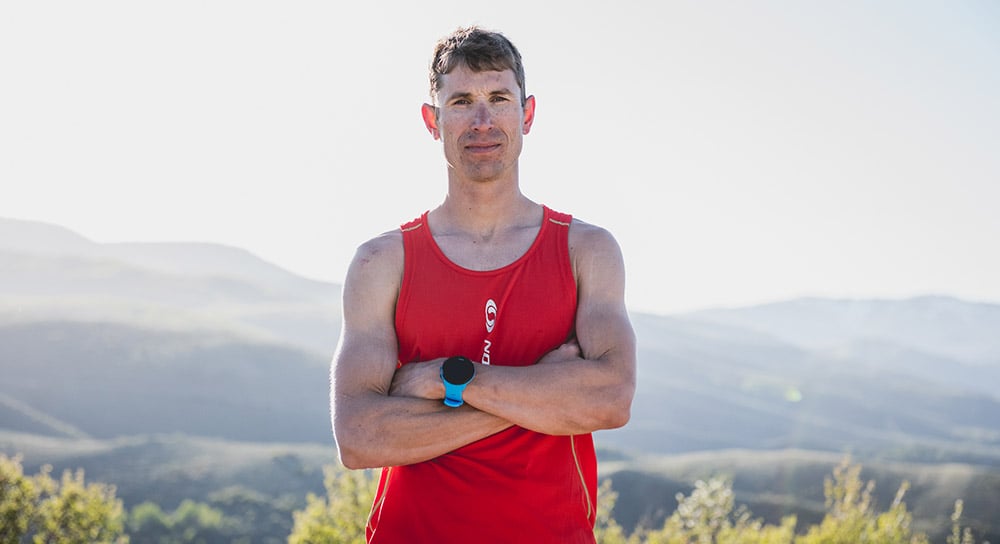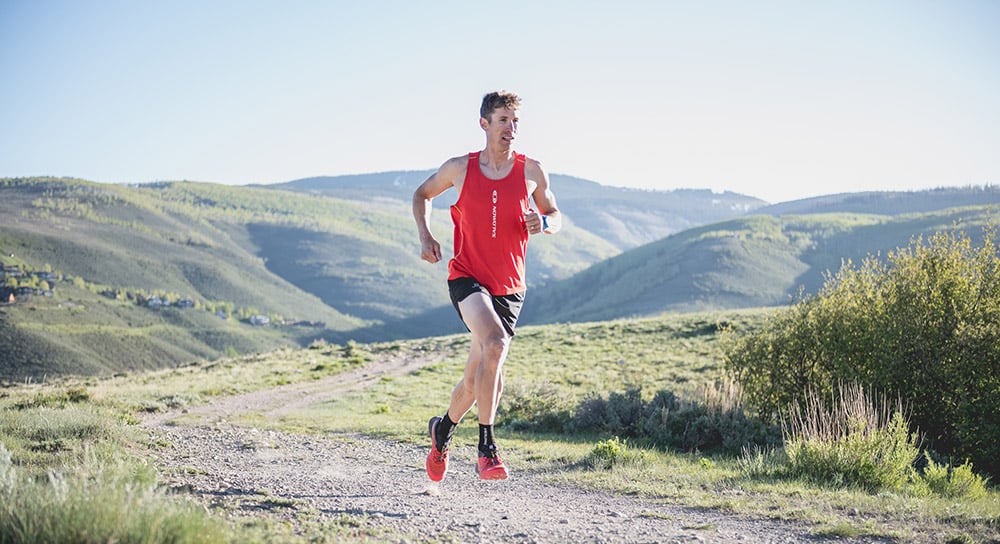Running economy is the holy grail for distance runners. It was once thought that a high VO2 max was the discriminating factor for distance running performance. However, among a homogenous group of runners, VO2 max is not correlated with performance. It turns out that running economy plays a more crucial role.
For many years the Kenyans and East Africans dominated middle distance events and it was thought their aerobic capacity due to altitude training and genetics were superior, but that is not the case. Their VO2 max values were no better than world class athletes from all over the world and athletes from other endurance disciplines. Remarkably, some East Africans were able to run exceptional times with moderate aerobic capacities. The most economical distance runner ever measured could run 1500m in 3:35 with a VO2 max of only 63 ml/kg/min (Foster and Lucia, 2008).
Increase stride rate
Running mechanics can be very complex. Compared to novice runners, elite runners tend to have a shorter ground contact time, less braking forces, less vertical oscillation, less energy expended in the frontal plane, specific joint angles during phases of the run gait, and less oxygen consumed for any given pace. To think of several these things at once will probably not be helpful. Increasing stride rate can be a simple solution to a complex problem.
My former professor and world renowned running coach Dr. Jack Daniels observed that Olympic distance runners had very similar stride rates in all of the long-distance events. The stride rate he observed was over 180 steps per minute. Most novice runners tend to be closer to 160 steps per minute which causes longer ground contact time, increased braking forces, and more vertical oscillation. Visually, efficient runners experience ground contact occurring under your center of gravity (instead of out in front), less heel striking, and a smoother, less loping stride. Simply increasing stride rate without increasing pace will solve several biomechanical issues at once. As pace increases, stride length increases while stride rate remains mostly unchanged.
To master, I like to practice the quick turnover at easy to moderate speeds where it might not feel as natural. Even speeds as low as a 12 min/mi pace, it is possible to maintain a stride rate of 180 steps per minute. Think about your legs acting as wheels while your roll over the ground like road runner, rather than like pogo sticks slamming into the ground. Initially a quicker turnover might be less economical as you retrain your neuromuscular system. However, the upside will be worth it with improved running economy and less impact.
Increase mileage
Running economy has been found to fluctuate in distance runners from season to season depending on total running mileage and from year to year. In a group of elite runners, during the road racing season when mileage was higher, running economy was better compared to spring track season when mileage was lower (Kubo et al., 2010). Another study found a cumulative effect on running economy based on total running mileage in a career having a stronger effect than current running mileage (Midgley et al., 2007).
Single sport distance runners and coaches have long known the benefits from higher mileage, but simply increasing mileage linearly can lead to a slippery slope of injury, burnout, and overtraining. Although open for interpretation, these studies show the importance of consistency over time. For multi-sport athletes they imply that there may be some benefit to an off-season run focus, increasing run frequency if running is a limiter, and consistent long runs throughout the year. When increasing mileage, a conservative approach to avoid injury is to limit total mileage increases to ten percent per week, but with undulation and not linear progression.
Strength training
Strength training has the potential to improve running economy and prevent injury in a few different ways. Although running doesn't require an extremely high level of core strength, many distance runners are deficient. I like the definition of core strength as lumbo-pelvic-hip stability. With running, you are either in the air or in a single leg stance. The single leg stance requires proper timing and recruitment of this core musculature to prevent too much wasted energy. Approximately 20% of expended energy while running is spent stabilizing in the frontal plane (side to side).
Another way strength training can improve running economy is neuromuscular and structural. Replacing a portion of running volume with a small amount of heavy strength training has been shown to improve musculo-tendon stiffness, and neuromuscular efficiency. They key here is to make sure that strength training remains supplemental and replaces some of your total training volume so you aren't just increasing fatigue.

"Functional body mass uses energy but is also used to propel you forward," says Josiah Middaugh.
Lose non-functional weight
This is pretty simple and straightforward and doesn't apply to everyone. Unlike swimming, or cycling on flat ground, running economy is always dependent on total body weight. I like to think of running as a series of falls and with every stride you must lift, catch, and support your body weight. Carrying less mass will use less energy. The key here is to focus on mass that is not functional such as body fat. Small increases in lean body mass (muscle) do not affect relative running economy. Functional body mass uses energy but is also used to propel you forward, so carry what you need but not anything extra.
Perform plyometrics
Plyometric training can be a shortcut to improved running economy. Like strength training, it is important to replace a portion of training volume with plyometric training and not add it on top of your training load. Plyometrics are generally considered high intensity although most people can perform lighter versions of plyometrics called form drills. Some examples include high knees, power skipping, bounding, double and single leg hops. The mechanism has most to do with the stiffness or responsiveness of the muscle-tendon complex (Spurs, et al., 2002). A small amount can go a long way with plyometrics, so perform high intensity plyos when fresh and limit total jumps to about 200 per session. Performed 2-3 sessions per week, running economy can be improved in as little as six weeks of plyometric training (Saunders et al., 2006).
Josiah Middaugh is the reigning XTERRA Pan America Champion and 2015 XTERRA World Champion. He has a master’s degree in kinesiology and has been a certified personal trainer for 15 years (NSCA-CSCS).
Images by Matt Trappe
References
Foster, C., & Lucia, A. (2007). Running economy: the forgotten factor in elite performance. Sports Medicine, 37, 4-5, 316-319.
Kubo, K., Tabata, T., Ikebukuro, T., Igarashi, K., & Tsunoda, N. (2010). A longitudinal assessment of running economy and tendon properties in long distance runners. Journal of Strength and Conditioning Research, [E-pub ahead of print]
Midgley, A., McNaughton, L., Jones, A. (2007). Training to enhance the physiological determinants of long-distance running performance: can valid recommendations be given to runners and coaches based on current scientific knowledge? Sports Medicine, 37(10), 857-880.
Yoshida, T., Udo, M., Chida, M., Ichioka, M., Makiguchi, K., & yamaguchi, T., (1990). Specificity of physiological adaptation to endurance training in distance runners and competitive walkers. European Journal of Applied Physiology, 61, 197-201.
Saunders, P., Telford, R., Pyne, D., Peltola, E., Cunningham, R., Gore, C., and Hawley, J. (2006). Short-term plyometric training improves running economy in highly trained middle and long distance runners. Journal of Strength and Conditioning Research, 20, 4, 947-954.
Spurrs, R., Murphy, A., & Watsford, M. (2002). The effect of plyometric training on distance running performance. European Journal of Applied Physiology, 89, 1, 1-7.
